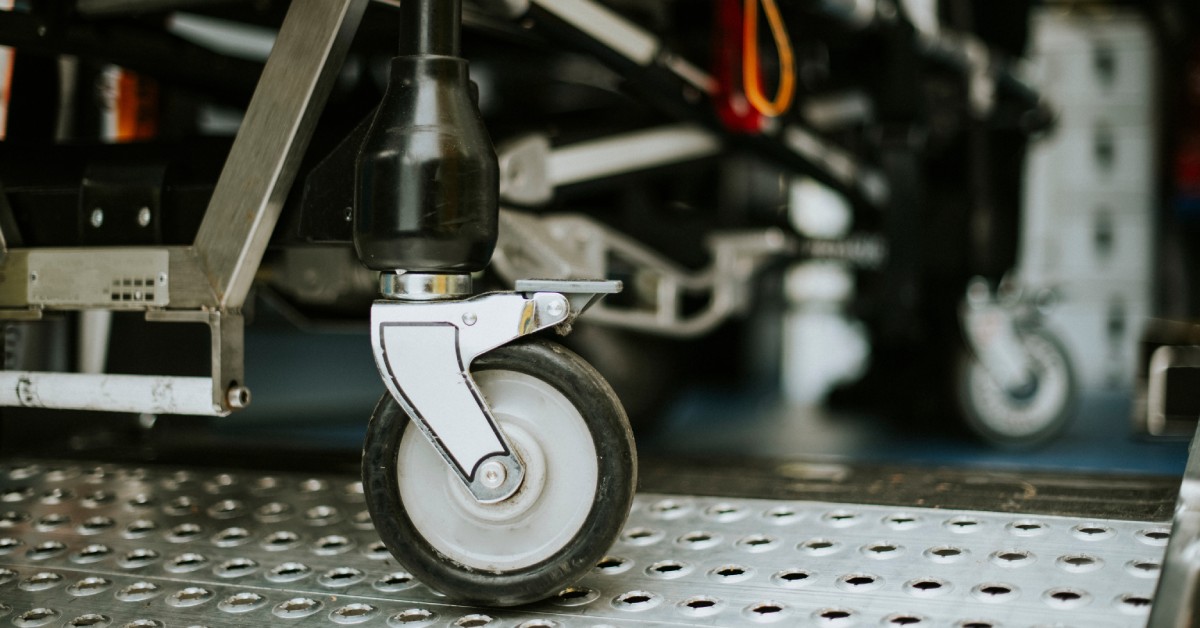Medical stretchers are fundamental for patient transport and care. By examining the lifetime costs of medical stretchers, decision-makers can maximize value and efficiency while minimizing long-term expenses. Improve resource allocation by understanding the factors that affect stretcher costs.
Initial Purchase Price
The initial purchase price of medical stretchers is influenced by several key factors, starting with the type of stretcher. For instance, stretchers designed for specialized purposes, such as bariatric or imaging stretchers, often command a higher price due to their specific functionalities and design requirements.
Additionally, the materials used in construction, such as lightweight aluminum or high-strength steel, can significantly affect costs. More durable materials typically result in a higher upfront investment.
Technological features also play a crucial role in determining the purchase price of stretchers. Advanced systems, such as electric height adjustment, integrated weighing scales, or electric motorized movement, tend to be more expensive due to the added complexity and functionality.
Buying Used
Typically, the upfront cost of stretchers ranges from $5,000 to $12,000. However, used hospital stretchers often come at a fraction of the price of new models. Saving on stretchers frees up the budget for other needs such as staff training, facility upgrades, or acquiring additional medical equipment.
However, assess the condition and history of used stretchers thoroughly. Buying from a trusted supplier is essential for safety and reliability. At Piedmont Medical, we follow a ten-step reconditioning process to ensure that every stretcher is meticulously inspected, repaired, and tested to meet rigorous quality standards.
Maintenance Costs
Regular preventative maintenance is vital for prolonging the life of a medical stretcher. Scheduled servicing and timely parts adjustments can prevent unexpected breakdowns and reduce repair costs. Investing in routine maintenance can also ensure compliance with safety standards, protecting both patients and staff.
Here are routine maintenance tasks for stretchers:
- Regularly clean and sanitize all surfaces to maintain hygiene and prevent infections.
- Frequently check mechanical components for any signs of damage or malfunction to ensure reliable operation.
- Examine the stretcher for wear and tear, paying close attention to wheels, handles, and joints to prevent unexpected failures.
- Apply lubrication to all moving parts as per the manufacturer’s recommendations to enhance smooth functionality and reduce friction.
- Test and verify the functionality of all safety features, such as brakes and restraints, to ensure they operate effectively.
Overlooking maintenance can lead to increased downtimes and higher repair bills. When creating a maintenance schedule, consider the stretcher manufacturer’s recommendations, assess usage frequency, and evaluate the conditions in which the stretcher is used, including temperature, humidity, and exposure to contaminants.

Parts Replacement
Over time, some components of medical stretchers will inevitably need replacement. Castors, mattresses, hydraulic or electric lifters, and batteries are subject to wear and tear. These replacements can add up, affecting the overall lifetime cost of the equipment.
Being proactive about parts replacement can help manage these expenses. Keeping an inventory of commonly replaced parts can ensure quick replacements and minimize downtime. Additionally, opting for high-quality parts can extend the life of the stretcher and reduce overall costs.
Usage Environment
The environment in which a stretcher is used significantly affects its longevity and maintenance needs. Stretchers in high-traffic areas, such as emergency departments, experience more wear and tear. Consequently, these stretchers may require more frequent maintenance and part replacements. In contrast, stretchers used in low-use settings may have a longer lifespan and lower maintenance costs.
Temperature can affect the materials and mechanical parts, potentially causing them to expand, contract, or degrade over time. High humidity levels can accelerate rusting or corrosion of metal components, leading to increased wear and tear and the need for more frequent inspections and servicing. Exposure to contaminants, such as bodily fluids or harsh chemicals, can also degrade the stretcher’s surfaces and moving parts. Understanding the demands of each usage environment can aid in selecting the most appropriate stretcher.
Brand Reputation
Established brands offer reliable medical equipment that meets safety standards, and they also typically provide robust customer support. Investing in a reputable brand can translate to cost savings over the stretcher’s lifetime.
A well-regarded brand often means higher initial costs, but the long-term benefits can outweigh this expense. Trustworthy brands are more likely to offer warranties and service agreements that minimize unexpected repair expenses and ensure consistent, reliable performance.

Customization and Accessories
Customization options and additional accessories can enhance the functionality of a medical stretcher. Integrated scales, side rails, or IV poles are all features that may increase the initial purchase price. However, these additions can improve patient care efficiency and overall value. Evaluate the specific needs of your healthcare setting to determine which customizations are worthwhile.
Here are a few examples of ways to customize stretchers:
- Adjustable side rails: These provide enhanced patient safety by preventing falls during transport or movement.
- IV poles: Integrated IV poles allow for the secure and convenient attachment of intravenous lines.
- Storage compartments: Built-in compartments offer practical storage for medical supplies and patient belongings, improving organization and accessibility.
- Specialized mattresses: Mattresses with pressure-relief features can enhance patient comfort and reduce the risk of bedsores during prolonged use.
- Integrated oxygen holders: These allow for secure oxygen tank placement, ensuring patients receive necessary respiratory support during transport.
- Retractable cord reels: Cord reels keep electric cords organized and out of the way, reducing tripping hazards and improving operational efficiency.
- Customizable headrests: Adjustable headrests provide added comfort by allowing precise positioning to meet individual patient needs.
- LED lighting: Built-in lighting improves visibility for medical staff during low-light conditions, aiding in patient assessment and care.
- Digital monitoring systems: Integrated systems enable real-time monitoring of patient vitals, enhancing emergency response capabilities.
Electric Features
Electric features increase the medical stretcher’s lifetime costs due to the sophisticated technology and engineering required to incorporate motorized adjustments and controls. These components allow for precise positioning and effortless operation, which significantly enhances the ease of use and improves patient comfort. The initial investment in electric features is justified by the efficiency and precision they bring to fast-paced care environments.
Beyond the initial investment, electric features can affect costs through maintenance and energy consumption. Motors and electronic systems require regular servicing to ensure optimal performance and prevent malfunctions. However, the benefits of increased efficiency and reduced physical strain on staff can translate into long-term savings and improved patient outcomes.
Understanding the total cost of medical stretchers involves analyzing purchase prices and ongoing maintenance. Investing in durable materials and efficient features can improve the equipment’s longevity and offset initial expenses. Consistent upkeep and timely replacements are crucial for maintaining stretcher efficiency and safety. Buying from reputable brands, making strategic customizations, and shopping for reconditioned equipment improves the value of your purchase.


Recent Comments